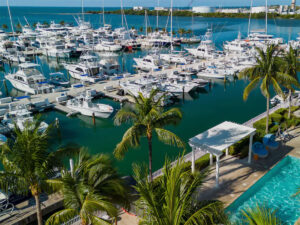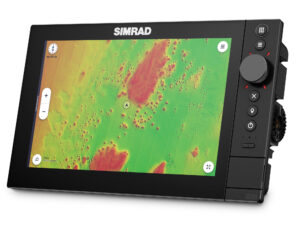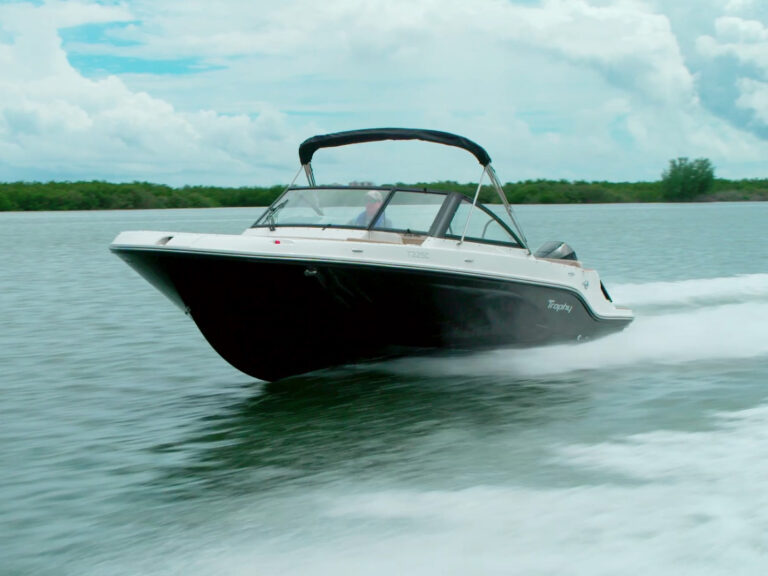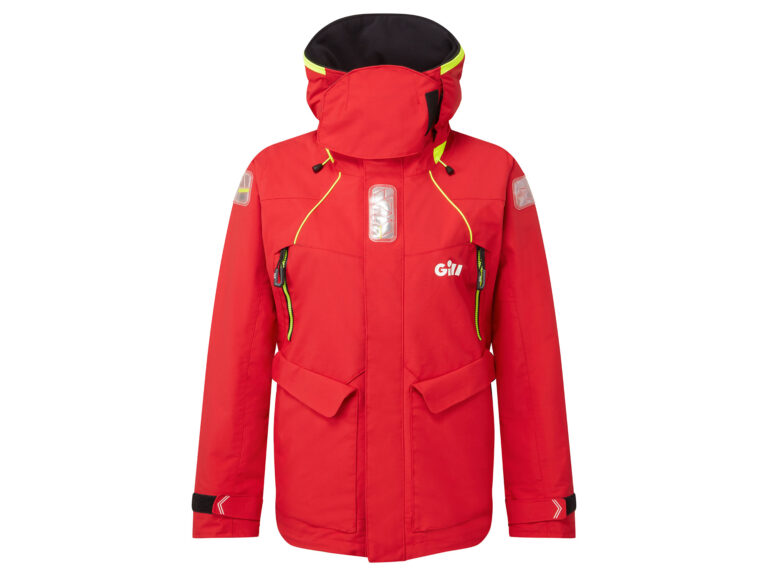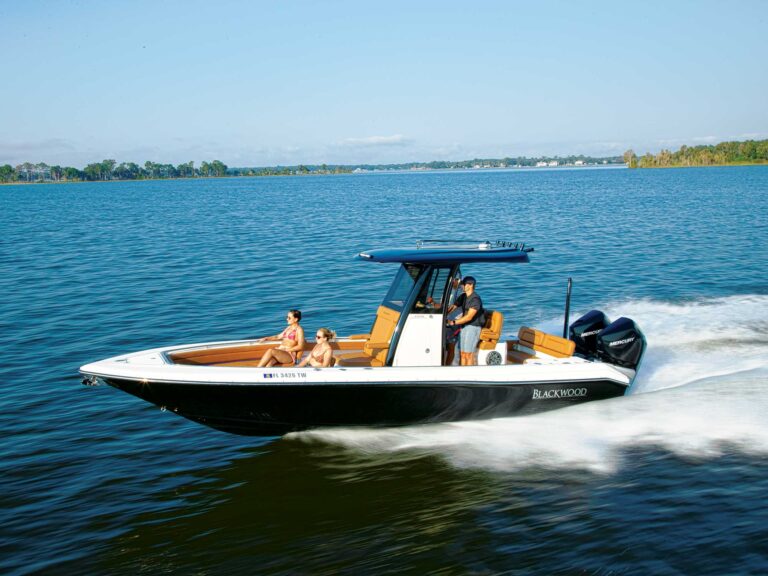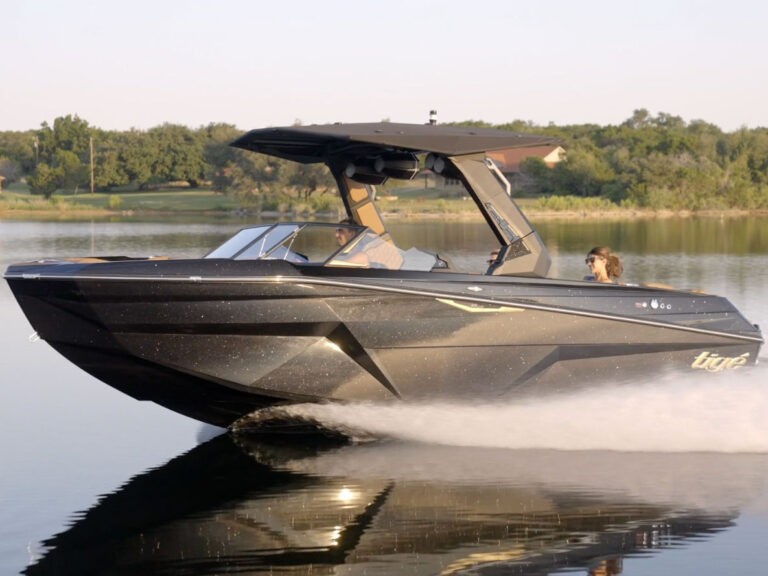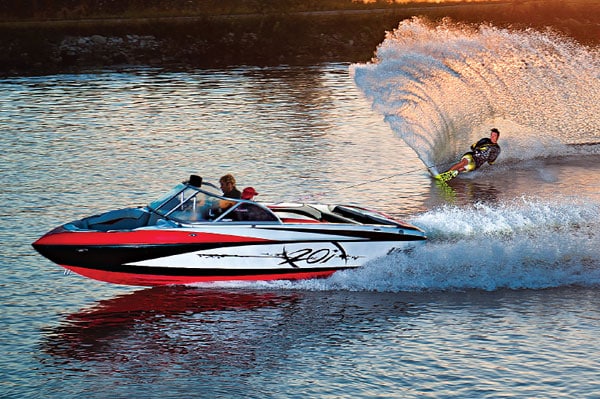
When it comes to selecting a new water ski boat, there’s one factor to consider above all others, and that factor is size. That’s right – size really does matter in terms of inboard performance, and that’s why it’s important to begin your search by identifying your needs.

Choosing a new ride isn’t just about fueling your swerve/wake/surf addiction with an amazing wake. You must also consider the size of your lake and typical crew, how far you have to trailer the boat, and, depending on your storage options, the size of your garage. There’s a lot to consider, and there are plenty of common knowledge truths that don’t always hold up. For example, do you think a bigger boat will always handle big water better than a smaller boat? Think again. While it generally holds true for most of the boating world, you need to know more about a boat’s hull design to know why. Take, for instance, MasterCraft’s 24-footer X-45, which is faster to plane and not as smooth in rough water as its smaller sibling, the 23-foot X-35.
“Our 45 is a sportier boat , so it’s not always about a bigger boat,” says MasterCraft marketing manager Josh Shave. “That does help; don’t get me wrong. But how deep the V is really affects how it cuts through water.” V is synonymous with deadrise — a term you’ve likely heard at the gas dock as a 35-foot cruiser pulled in, but maybe one you haven’t completely understood.

Deadrise is basically the angle of the bottommost part of the hull as it rises up to meet the freeboard. A deeper deadrise creates a more severe point at the keel of the boat that will cut through waves more easily, making for a smoother ride in rough water. And, by contrast, a shallower deadrise makes for more lift and a more blunt, jarring effect as it cuts through waves, but also an extremely fast time to plane and an efficient, sporty ride in smooth water.
It’s also important to have realistic expectations about your boat’s strengths and weaknesses. For example, while modern marine technology (think strakes, chines and trim tabs) can do wonders to knock down the wake on a 22- to 24-footer for a slalom set, the fact is you’re never going to get as flat and soft a wake with a bigger boat as you would with a nimble 20-footer with minimal deadrise. The physics principles are working against you. And the differences don’t end there.

Another important factor that you have to consider is width. “Length is a big deal, but width does more for functional space,” says Malibu national promo director Dennis Kelly. “A 93-inch boat was as wide as we made back when we used to do the 21.5. Now, they’re over 100 inches wide. Four or 5 inches in width is almost equal to 18 inches in length in terms of functional space that you can sit butts down in.” Essentially, a wider boat with a well-thought-out confi guration has more square footage than a skinnier boat of the same length; it’s as simple as that. The more room you have in your boat, the more room you have for gear and people, and the easier it is to have more people and more time on the water. MasterCraft, Supra, Moomba, Centurion and Malibu all have at least one boat with a beam of 102 inches.
Now let’s get down to the different size categories, starting with the extremes on either end. First off , the nimble, sporty boats in the 19- and 20-foot category: “The people who really need a 20-foot boat are people on size-restricted lakes, have long hauls ahead of them, or need to get their boat in their garage,” says Tigé’s director of design and marketing, Danny Gutierrez. “Anyone who wants a big product in a small package — that’s who needs a 20-footer.” If you meet any of these criteria, you may need to consider a smaller boat. If you’re a dedicated “buoyhead” or tournament three-event skier, you’re also going to need a smaller boat. There’s no substitute for a tournament-approved 19- to 20½-foot boat while in the course. As far as storage is concerned, most 20-foot boats will fit in a standard garage after you fold down the swim platform and tower, so if you’re planning on pulling your boat into and out of a garage often, make sure it has an efficient, easy system for folding down the platform and collapsing the tower. You should also consider the difference in fuel economy if you’re regularly trailering your boat great distances to get to your favorite waterway.

However, not everyone is a slalom addict, and at the opposite end of the spectrum are the wake giants, who want as much time in the air as possible for bigger and techier tricks, and the biggest swell possible for wakesurfing. “This is someone that buys into the bigger-is-better philosophy,” says Greg Meloon, Nautique’s vice president of marketing. “Size is much more than a boat’s length. The customer should evaluate how the boat rides and handles in the conditions they typically encounter. Not all boats are measured equally; the customer needs to compare boats based on the interior space their typical crew requires.” This means making sure your 23- to 24-foot boat can still pull double-ups at the end of your lake, like Nautique’s 23-foot wake monster, the Air Nautique 230, does every day at OWC (Orlando Watersports Complex). Larger boats need to strike a balance among desirable traits: throwing out as large and clean a swell as possible, having the maneuverability demanded by today’s top-level riders and retaining some fuel economy.
So, if 19 feet is the magic number for a flat, soft ski wake and 24 feet is the pinnacle of wakeboard performance, then why not go with a 17-foot boat for an even smaller wake and a 28-foot boat for the biggest wake the industry’s ever seen? Well, like most things related to boat size, there’s more to it than meets the eye. For example, on the smaller side of things, you really can’t go much shorter than 19 feet and still fit a driver, spotter and a motor in a package you’re not going to yank out of the course as you pull out of the gates. There simply just isn’t enough volume. And for larger wakeboard boats, the problem is in taming the wake. For years, MasterCraft’s flagship wake machine, the X-Star, has been 22.5 feet. Why not 24 feet? Well, it had a consistent, proven hull that made a great wake time and time again. So, when the X-Star was moved up to a 24-footer, it was only after years of testing and approval from MasterCraft’s team of riders that the hull was finally unveiled.
At 22 feet 3 inches, the X-Star had a sweet spot of consistency and feel that needed to be matched exactly on the new X-Star, and, with twice the ballast and a bigger hull, you’d better believe the wake is bigger. “Essentially, you want big, but you still want it to handle like a small boat,” Shave says. Gutierrez notes some other concerns. “As the boats get wider, you need to have a permit. As the boats get longer, there’s more to haul and they have to have bigger slips. It jumps into a whole new realm that our consumers don’t generally prefer.”

One of the most difficult things boat companies face is mastering the two extremes of water sports: the giant ramps needed for wakeboarding and surfing and the flat, soft wakes necessary for skiing in the same boat. How do companies pull this off? There’s plenty of debate about the best ways to accomplish this, but there seems to be some consistency among crossovers. They’re usually about 20 to 22 feet in length, they have a wide beam, and they are usually V-drives with a deep-V hull and a stern design that is relatively flat. Great crossover inboards all start with a well-planned, battle-tested hull, but no crossover is complete without wake-shaping gadgets like plates and ballast. It’s crucial to have some additional help with the hull if you’re going to move seamlessly from a small, soft ski wake to a peaky, bigger wake for wakeboarding and surfing.

At the end of the day, when you’re exhaling deeply and preparing to sign the check on the perfect size boat for your sport, family, waterway and budget, consider for a moment what you’ve bought. It’s something more than just a tool to feed your water addiction. You’ve bought fun for everyone who will be on board. Your boat is an investment in a future of fun for your crew and family, a ticket to faster personal progression on the water, and memories that will last a lifetime.

